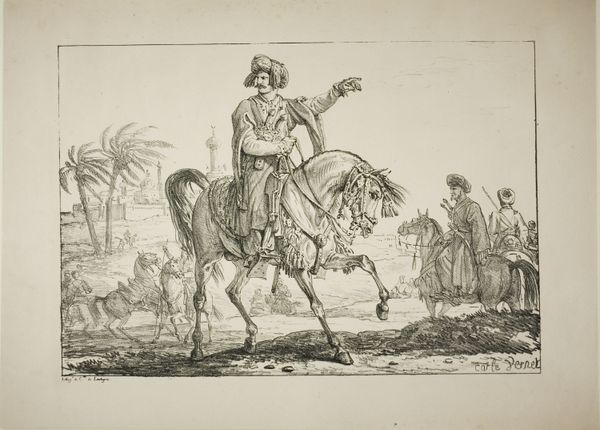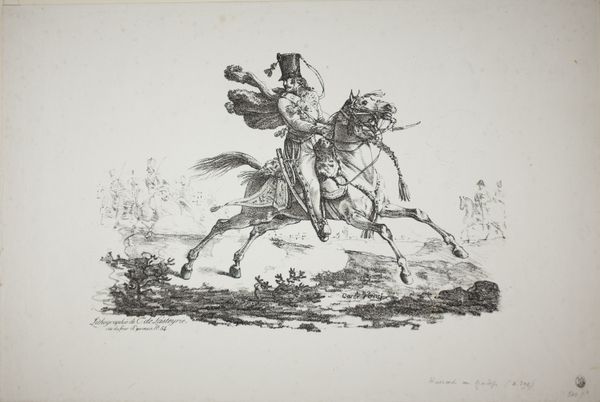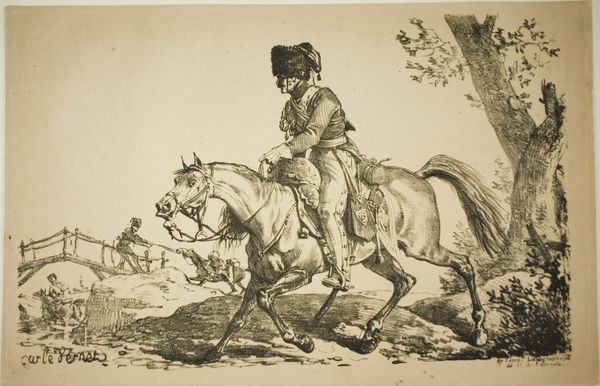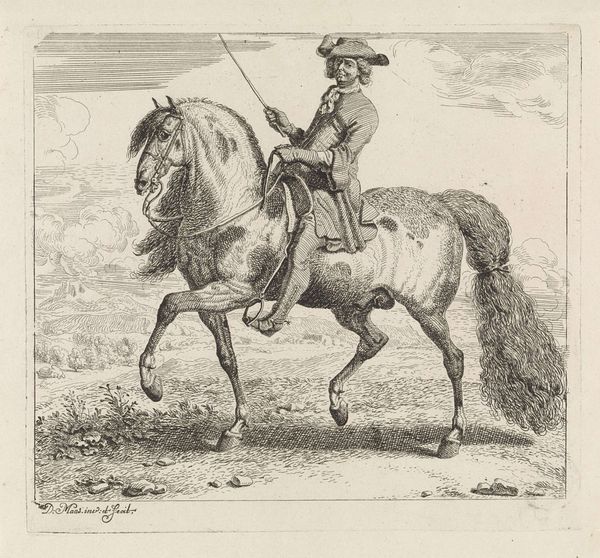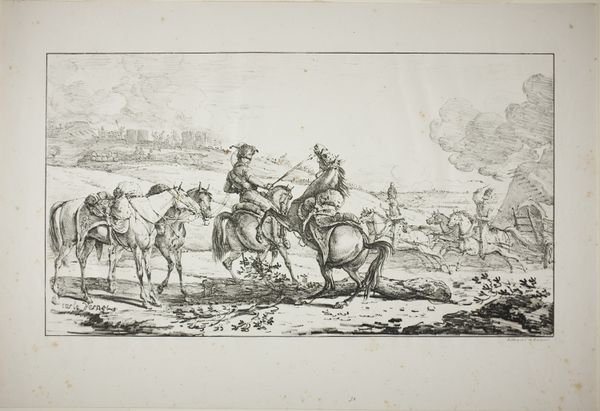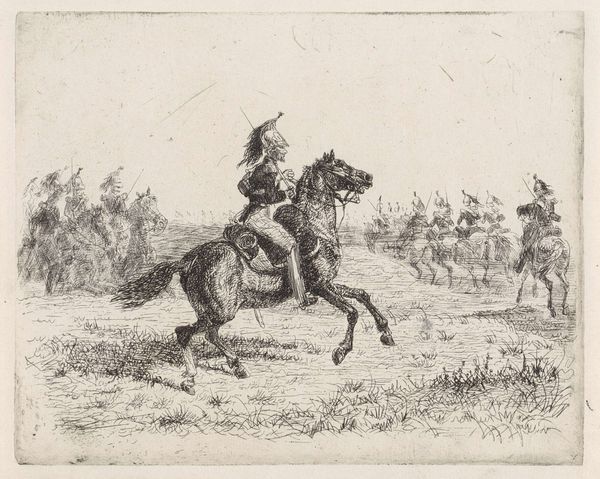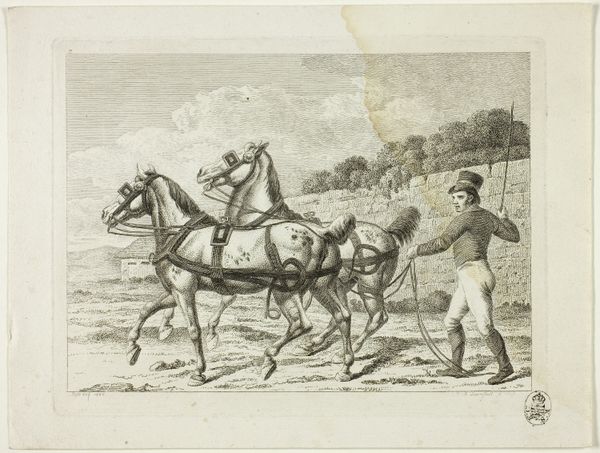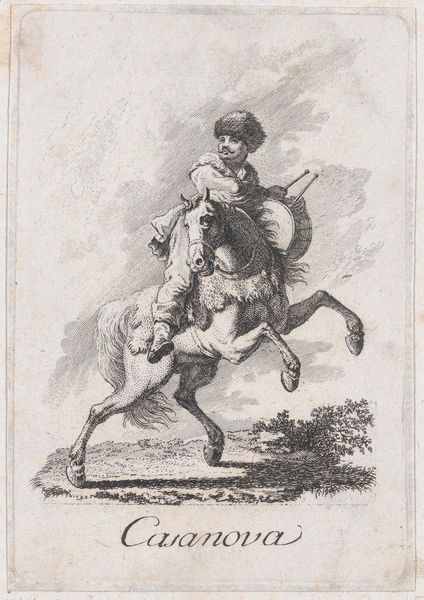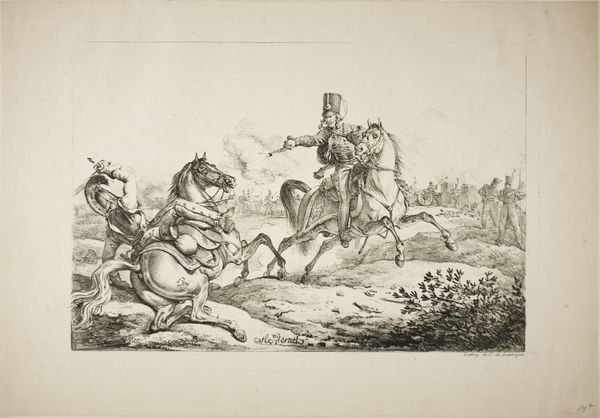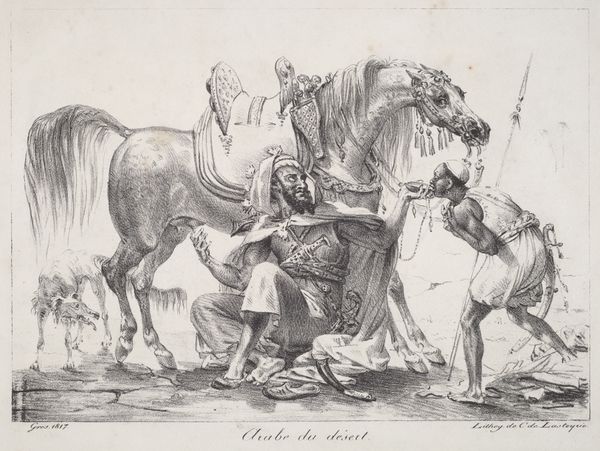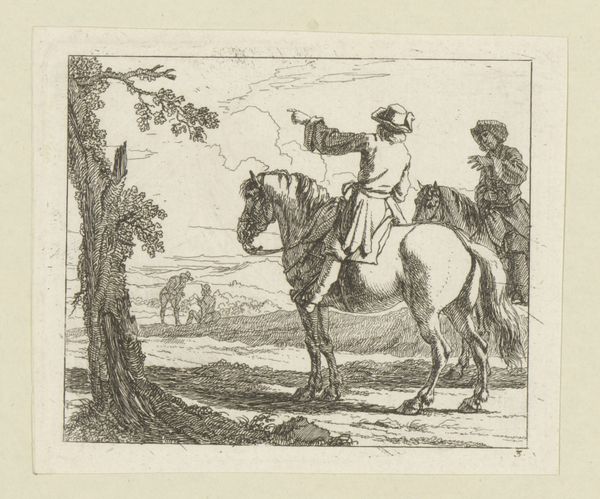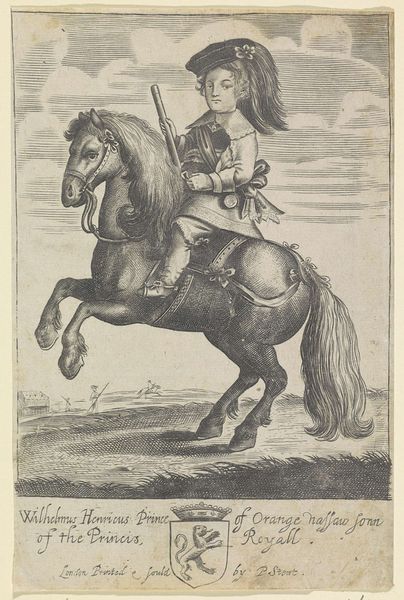
drawing, lithograph, print, paper
#
drawing
#
lithograph
# print
#
paper
#
romanticism
#
france
#
genre-painting
#
history-painting
Dimensions: 256 × 347 mm (image); 306 × 401 mm (sheet)
Copyright: Public Domain
Editor: This lithograph, "Kalmouk Archers Hunting Deer," created around 1820 by Carle Vernet, depicts a hunting scene. The lithographic medium gives it this distinct grainy texture. What stands out to me is how dynamic and action-packed the composition feels. How do you interpret the historical context through its materiality? Curator: As a lithograph, its reproducibility speaks to the changing art market in the 19th century. Consider the source material - paper. Vernet is making commentary on accessibility of this 'genre scene.' What were lithographs if not the industrial product of this moment? Note the French origins as well, as opposed to the "Kalmouk." The subject of Kalmouk archers suggests a fascination with exoticism but also the portrayal of labor, albeit in a romanticized setting. Does it reflect cultural appropriation? Editor: That’s fascinating. I hadn’t considered how the mass production of lithographs plays into the theme itself. The image of the hunters becomes a commodity in a way, quite different from, say, a unique painting of the same subject. But about the labor--the making of art is a kind of labour too, how might we view that process, here? Curator: Precisely. The image isn’t just depicting labor but results from it, which complicates any simple interpretation. It forces us to think about artistic labor versus other forms of physical or 'primitive' work being illustrated here, who had the right to own and reproduce this scene, and at what cost? The relative ease of producing lithographs democratized art ownership and reshaped art viewership; labor in its many shapes is core to Romantic era consumption. Editor: That's a valuable point. Considering the production process sheds new light on the complexities of its historical narrative. It goes beyond the romantic depiction of hunting and allows us to appreciate this intersection of culture and commerce. Thanks for this perspective! Curator: Indeed, every artwork carries its mode of production within it. Understanding that production unravels so much about what an image really says and means, right?
Comments
No comments
Be the first to comment and join the conversation on the ultimate creative platform.
